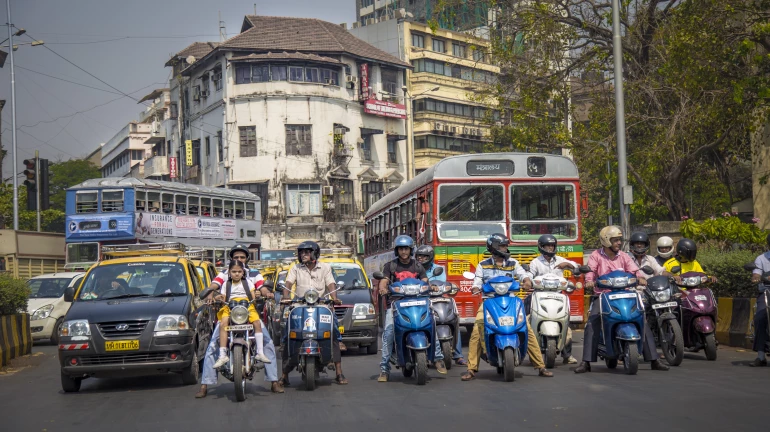
Authorities in Mumbai are launching new efforts to improve commuting at 30 of the city’s most dangerous junctions and roads which have left 501 people dead while seriously injuring 1,172 people over the past three years.
This is part of a joint effort between Brihanmumbai Municipal Corporation (BMC), the Traffic Police, Bloomberg Philanthropies Initiative for Global Road Safety (BIGRS), and World Resources Institute (WRI), who are reportedly preparing designs to modify the infrastructure of these roads to remove the obstacles and cut down the number of road accidents.
According to a report published by Bloomberg and the city’s traffic police, pedestrians between the ages of 30-59 were the most likely to be the victims of accidents. Motorcyclists are the second most likely victims of road accidents, the report added.
Also read - Report Shows 447 People Died In Mumbai Last Year Due To Road Accidents
As per the report, pedestrians and motorcyclists made up for 90 per cent of the total deaths and 83 per cent of all injuries caused due to accidents at 30 junctions of Mumbai in 2019. The traffic police released a separate report on road crash fatalities between January-August 2020, revealing that 172 people died during these months, with 47% of them being pedestrians.
Experts who are currently going through the black spots among junctions and roads said that the Amar Mahal junction in Ghatkopar is the most dangerous as around 25 people had died and 40 were seriously injured in accidents between 2017-2019.
Vikhroli’s Godrej Junction takes the second place in this list as it witnessed the deaths of 18 people during the same timeframe. A closer look at the published data reveals that the city’s dangerous zones are spread across 15 road stretches and 15 junctions in Mumbai spanning nearly 184 kilometres.
It is further said that 210 deaths occurred at junctions in Zone 4 which includes areas such as Sion, Matunga, Wadala TT, Antop Hill, Bhoiwada, and Kalachowkie. Meanwhile, Zone 10 (Kherwadi in Bandra East to Andheri East along the Western Express Highway) saw the death of 18 pedestrians in 2019. These two stretches combined led to the deaths of 183 motorcyclists and 45 people in four-wheelers, the data shows.
Read - Coastal Road: BMC To Begin Tunnel Boring Works On Jan 7
The Joint Commissioner of Police (Traffic), Yashasvi Yadav in conversation to Hindustan Times said, “The efforts we’ve taken over the years have led to a decline in accidents and deaths by 27% in 2019 as compared to 2015. We’ll continue working to bringing down the loss of lives by studying the pattern of road crashes and suggesting ways to curb them.”
According to the experts, the maximum number of deaths and injuries on the road took place during weekday peak-hours between 7 PM to 9 PM. As for the weekends, most accidents reportedly took place between 10 PM and 11 PM.
World Resources Institute has passed on some design recommendations to improve road safety on these spots. In 2016, WRI partnered with the BMC and the city’s traffic police to improve the HP petrol pump intersection at Bandra. Officials conducted a trial by using traffic barricades, cones, and paint. This trial period was monitored to make the installations permanent.
Similar changes could be made to the 30 dangerous roads and junctions in the city. However, there’s currently no timeline for when any of these junctions will be repaired or modified.
The Public Health and Preventive Medicine Consultant for Vital Strategies, Dr Sara Whitehead said, “The continuous decrease in road traffic deaths from 2015 to 2019 is an impressive testament to the hard work done by city officials and the police in Mumbai. But too many Mumbaiites are still at a risk (sic) of injury or death merely while walking on the streets. The data from reports point the way to where and how to prevent these needless mishaps.”
Also read - BMC To Conduct Remodelling And Widening Works On Mumbai’s Drains





